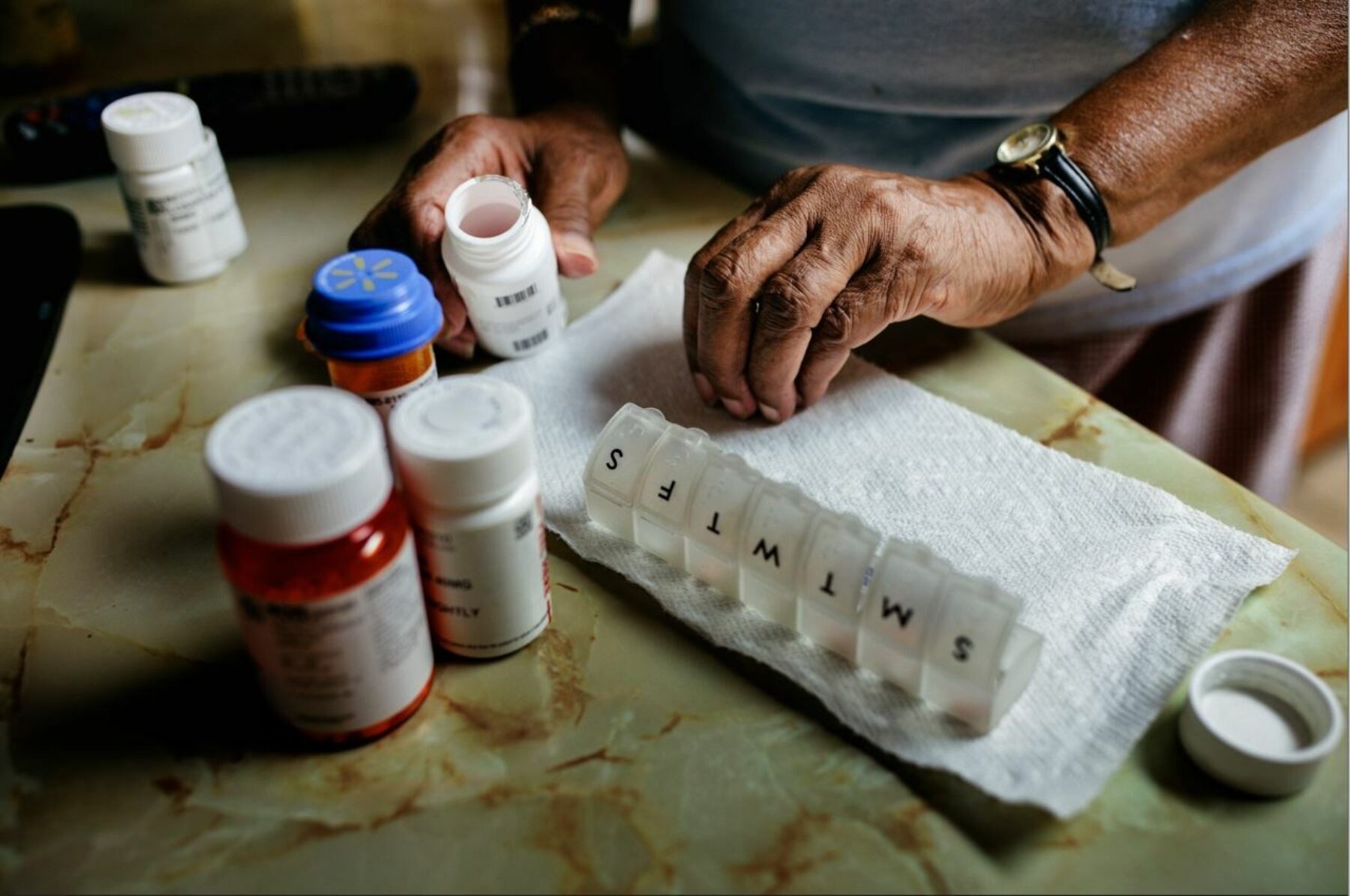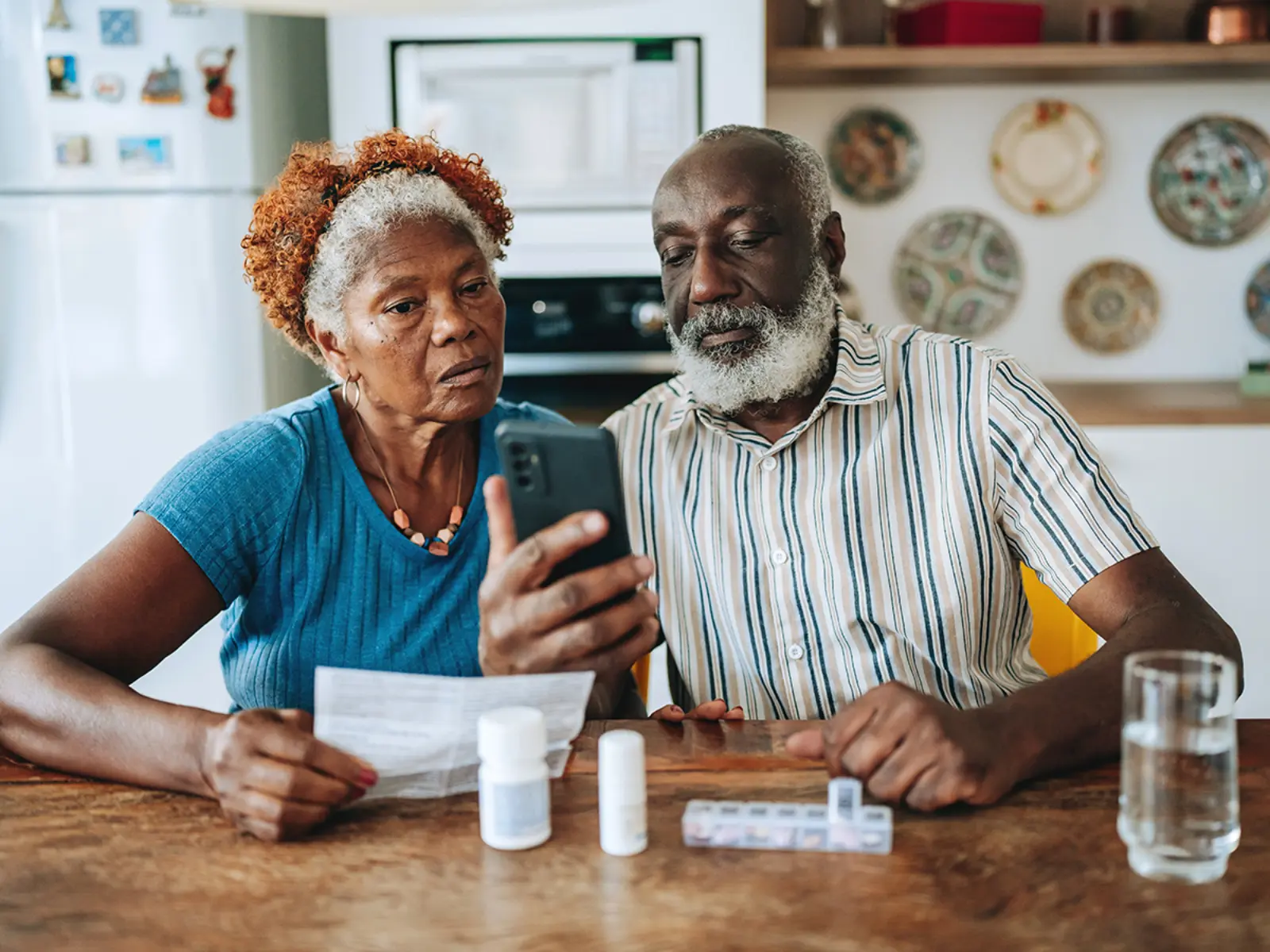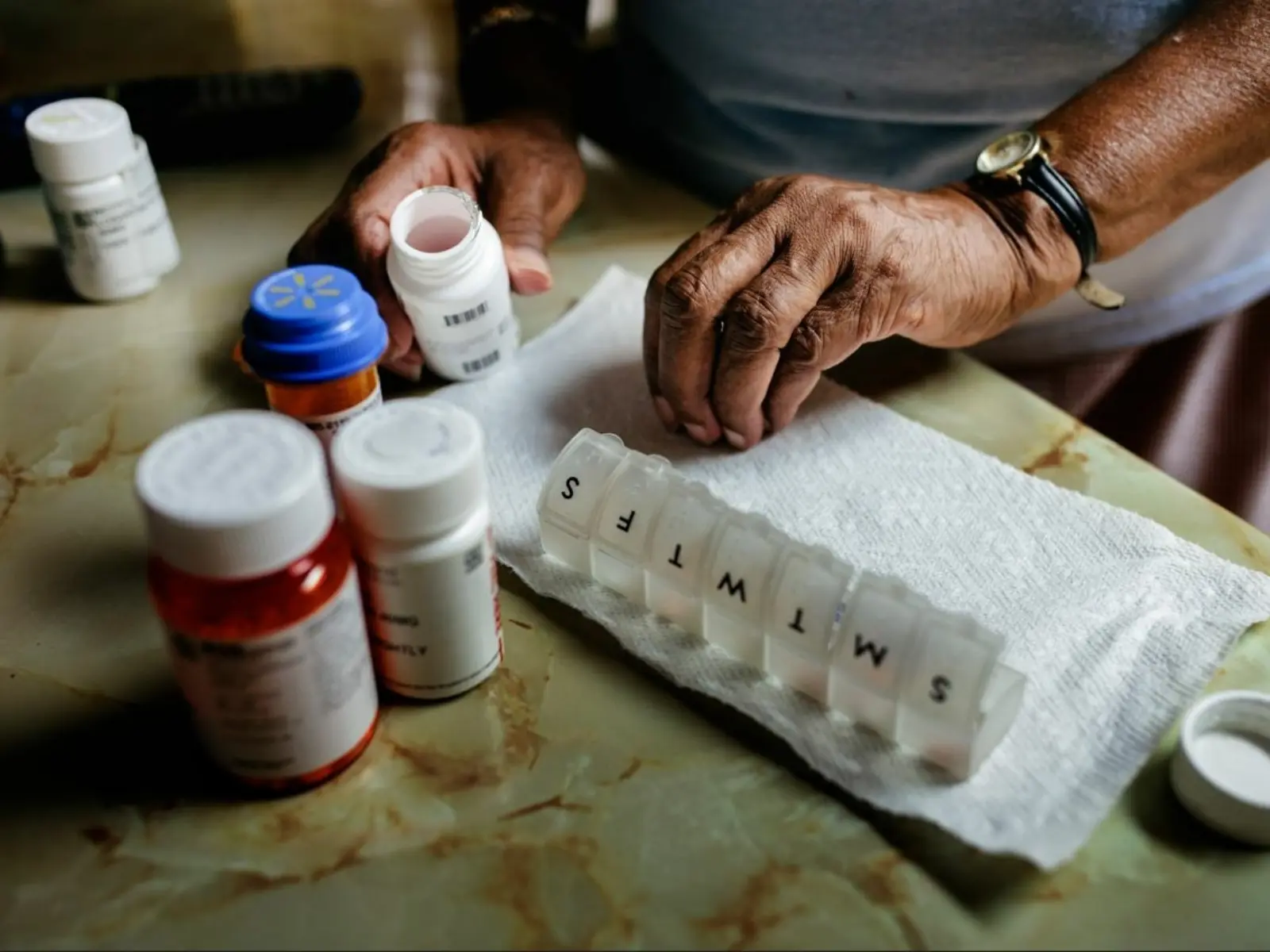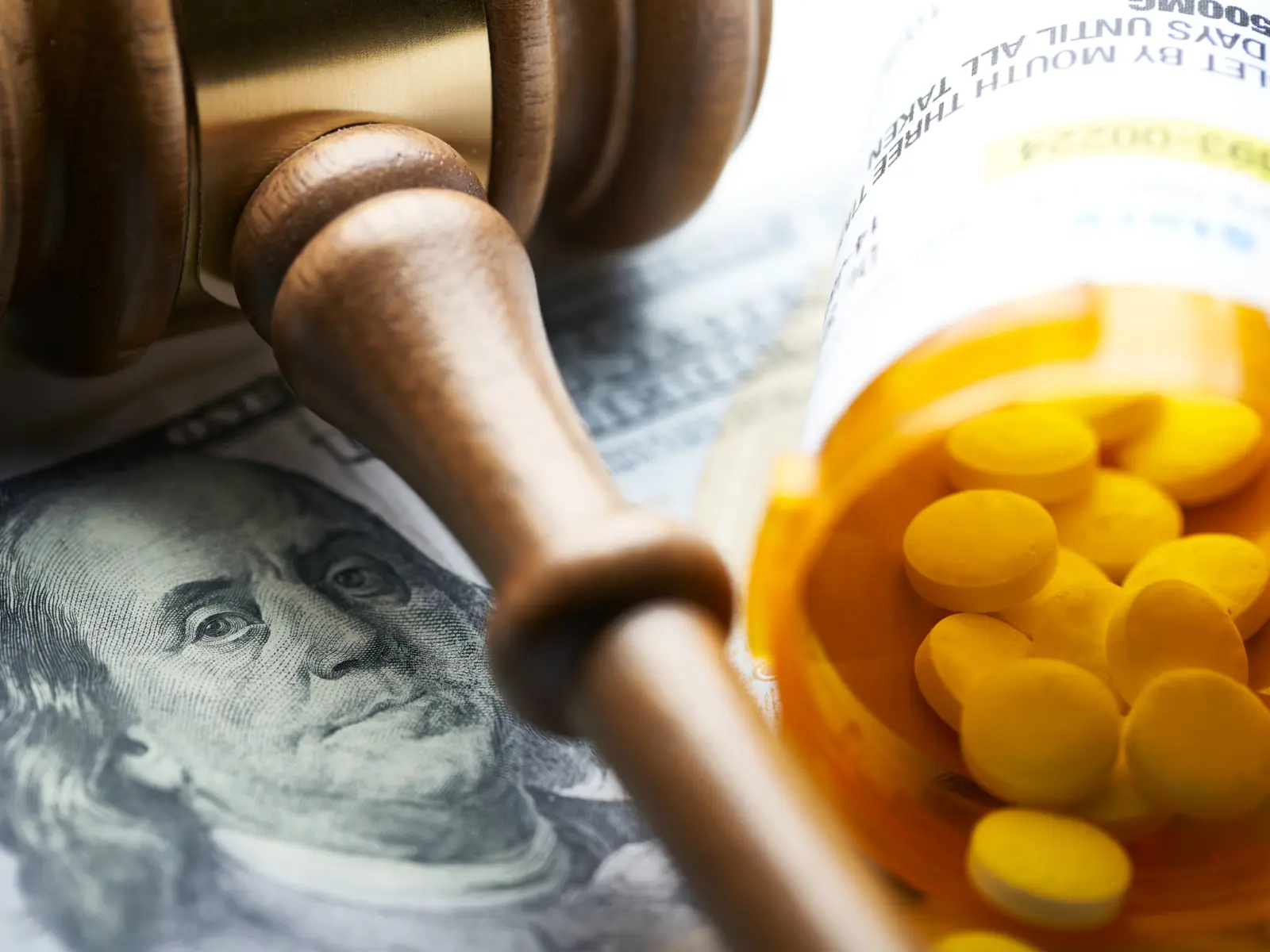Larry Zarzecki was 50 when he was diagnosed with Parkinson’s disease, a brain disorder that can cause unintended or uncontrollable movements, trouble with motor skills, and difficulty with balance and coordination. As a result of his condition, the Maryland resident also suffered a fall that caused a traumatic brain injury (TBI), bringing further complications.
Managing the symptoms of Zarzecki’s Parkinson’s disease combined with the residual effects of his TBI requires prescription drugs that cost around $3,000 per month out of pocket. But the cost, he says, has destroyed his marriage, driven him to sell his home, and eaten through around $100,000 in retirement savings.
“I became a person who had to make a decision of whether to heat, eat, or treat,” says Zarzecki, now 61, of the impossible trade-offs he has made between paying for his prescriptions and paying for other life essentials.
About a quarter of Americans cannot afford the drugs that they are prescribed. As a result, they may skip doses, cut pills in half, or do without one medication to afford another — a tactic Zarzecki himself has used. These actions can have dire health consequences for patients with disorders like diabetes or congestive heart disease.
“The United States pays two to four times more for brand-name drugs than other industrialized countries,” says Gerard Anderson, a professor at Johns Hopkins University’s Bloomberg School of Public Health. “That affects their affordability for most Americans.”
To address this problem, Maryland recently passed a law that confirms and strengthens the authority of the state’s prescription drug affordability board (PDAB) to set upper limits on what state and local governments can pay for prescription drugs, an effort to make them more affordable for residents like Zarzecki.
I became a person who had to make a decision of whether to heat, eat, or treat.Larry Zarzecki spokesperson for Maryland and national platforms of AARP
“Drugs don’t work if people can’t afford them,” says Vincent DeMarco, president of the Maryland Health Care for All! Coalition, an organization that fought to establish the new board.
With the law’s passage, Maryland leads a growing legislative movement across the United States — including efforts in Colorado, Maine, Minnesota, Oregon, Washington, and New Hampshire — that aims to protect patients who are struggling to afford high-cost drugs. Emboldened by these leading states, New Jersey is also in a strong position to pass legislation for a prescription drug affordability entity and sign it into law.
Setting ‘upper payment limits’ on High-Cost Drugs
PDABs are independent state government entities that have the authority to examine the high cost of prescription drugs and determine how to make them more affordable for residents.
At the federal level, tackling high drug prices has been a key issue for Congress, which culminated in the recent passage of the Inflation Reduction Act (IRA). The IRA allows Medicare to negotiate the price for a subset of high-priced drugs that do not have generic competition. But PDABs serve as a way for states to build on the success of the IRA and lower drug costs for people enrolled in certain commercial plans, including state and local health plans.
“PDABs are going to be looking at issues of affordability,” explains Jane Horvath, principal at Horvath Health Policy, a consultancy that advises lawmakers on addressing expensive prescription drugs. “How many people need a drug and can’t get it because of cost? What’s going on in the market? Is there any competition? Based on what they learn, they will figure out what consumers, health insurers, and providers should pay for the drug. Depending on their design, PDABs can be similar to public utility commissions that figure out what consumers should pay for water, natural gas, and electric — public goods.”
Importantly, PDABs won’t attempt to regulate manufacturer list prices. Instead, they will set an upper payment limit, or a ceiling on the amount that certain payers in the state can reimburse for a drug the PDAB determines to be unaffordable. An upper payment limit for a drug operates in a statewide market. This approach helps circumvent constitutional challenges to PDABs based on the Dormant Commerce Clause, which have been used in the past to shoot down efforts at making drugs more affordable at the state level.
Policy experts like Horvath say that PDABs are an important mechanism for setting affordability standards in a pharmaceutical market that is often unclear to both lawmakers and the public. The business model is complex, with many different entities in the supply chain — from providers to wholesalers to pharmacy benefit managers — making money off the sale of drugs.
“The whole industry is so opaque,” says Horvath, who formerly worked in the pharmaceutical industry for a decade.
In this environment, PDABs promise to create greater transparency, affect the supply chain, and get prescription drugs to consumers at an affordable price.
New Authority for PDAB Across the Country
In Maryland, the Maryland Health Care for All! Coalition and other advocacy groups supported legislation that would help tackle the issue of unaffordable prescription drugs. Zarzecki, who was the spokesperson for the Maryland and national platforms of AARP on this issue, testified before lawmakers about the problems he suffered due to high-cost drugs.
In 2019, with sponsorship from Sen. Brian Feldman in the Senate and Del. Joseline Pena-Melnyk in the House, Maryland passed a law establishing the nation’s first PDAB. The legislature passed additional measures this April to codify the board’s authority and dedicate funding for their operations, which was then signed into law by Gov. Wes Moore. The board has the ability to set a maximum amount that state and local governments can pay for certain prescriptions.
“If we have upper limits on what state and local governments can pay for high-cost drugs,” DeMarco says, “then local governments can do more to help their people in other ways.”
Today, Maryland maintains a five-member board, as well a stakeholder council of 26 members — drawn from the pharmaceutical industry, the insurance industry, and the public — who advise the board. This year, the board will conduct a first round of cost reviews on a handful of drugs.
If we have upper limits on what state and local governments can pay for high-cost drugs, then local governments can do more to help their people in other ways.Vincent DeMarco president of the Maryland Health Care for All! Coalition
“In our cost review process, we have the authority to do a deep dive to understand the issues around high-cost drugs,” says Andy York, executive director of the Maryland Prescription Drug Affordability Board. “The outcome of that process can be a determination that particular drugs are causing affordability challenges.”
The process will help the board decide which drugs require upper payment limits. York expects the board to begin implementing these maximums by early 2024, improving the affordability of drugs for many Marylanders.
For Zarzecki, being involved in these changes has been extraordinarily gratifying.
“It honestly made me feel proud for the first time in a long time,” he says. “It wasn’t about just one person. It was about bringing an issue forward that money was able to bury for so long, where big company interests were able to bulldoze over hardworking, underserved people in need.”
In 2021, a bill in Colorado, signed into law by Gov. Jared Polis, established a PDAB with similar authority. Its determinations apply not only to state and local government payers, as in Maryland, but to all consumers in the state’s commercial market.
In May, Polis signed a bill strengthening the PDAB’s authority — for example, by increasing the number of prescription drugs eligible for upper payment limits from 12 to 18. The bill was sponsored by Rep. Chris deGruy Kennedy, Rep. Ruby Dickson, Sen. Sonya Jaquez Lewis, and Sen. Janet Buckner. The Colorado Consumer Health Initiative, a local consumer advocacy organization, also worked tirelessly to get the bill across the finish line and fought to defeat amendments that would have carved out exceptions to the drugs that the PDAB can consider.
Across the country, this approach is picking up steam. In Maine, Consumers for Affordable Health Care supported a bill that was passed to establish a PDAB. In Oregon, the Oregon Coalition for Affordable Prescriptions supported legislation that created a PDAB, which advocates are working closely with state partners to get up and running. And in Minnesota, with support from state-level advocates and Take Action Minnesota, Gov. Tim Walz signed a budget that funds a PDAB with upper payment limit authority.
Other state-level advocates in New Jersey, with support from New Jersey Citizens Health Action, have advanced bills that are on the verge of passing — including a prescription reform package that contains a prescription drug affordability council. There are also movements to create PDABs in Virginia and Pennsylvania.
‘States will become the laboratories for national policy’
In the meantime, experts warn, states must guard against legal challenges to their new PDABs. Pharmaceutical companies employ hundreds of lawyers for exactly such purposes.
“We can set upper payment limits, but the pharmaceutical industry and others are going to go after these regulations with a vengeance, and they’re going to look for the weakest link,” says Anderson, who sits on Maryland’s board. “We’ll see whether or not the boards will be sustained by the courts.”
He recommends that states, when drafting legislation on PDABs, look at how courts have reviewed earlier attempts to set rates on prescription drugs and learn from prior litigation.
So many new expensive drugs are entering the market, states will each come up with their own policies. But Congress will also need to deal with these issues.Gerard Anderson professor at Johns Hopkins University's Bloomberg School of Public Health
Anderson believes that state-level efforts, when executed well, have the power to inspire broad-based federal action on drug pricing, which will help make prescription drugs affordable for all Americans.
“So many new expensive drugs are entering the market,” Anderson says. “States will each come up with their own policies. But Congress will also need to deal with these issues. We’re going to need to have a national policy, and states will become the laboratories for the national policy.”

















